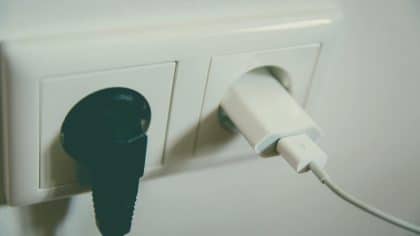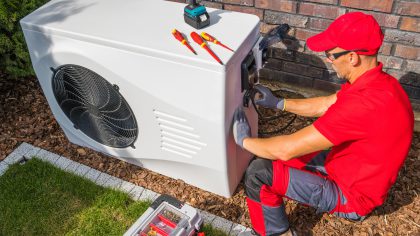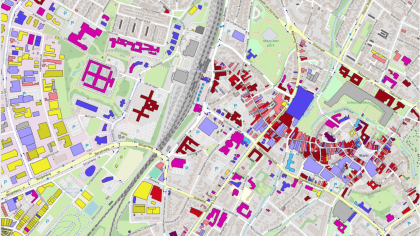The transport medium for heat inside the dwelling can be either water or air, hence the names ‘air-water heat pump’ and ‘air-air- heat pump’. In case of water, the heated water is circulated around the heating circuit and also passed through the hot water cylinder. Hot water is stored in this cylinder and is available for use in baths, showers and taps troughout the dwelling. A storage cylinder is needed because the heat pump can not deliver a lot of hot water instantaneously. For domestic hot water, the complementary options are a separate (electric) boiler or one that is integrated in the indoor unit. In case of air, heat generated is transferred to one or multiple indoor air units, which act as hot air fans. Air-air heat pumps are often reversible which means they can be used for space cooling as well, similar to air conditioning. Air-air heat pumps can not supply hot tap water hence a separate boiler is needed.
The efficiency of a heat pump is expressed as the coefficient of performance (COP), the ratio between heat output and electricity input, and is mainly determined by the difference between delivery temperature and source temperature. The higher the source temperature, and the lower the delivery temperature, the higher the COP. In winter, the temperature difference is larger, resulting in a lower COP.
A heat pump usually heats the water to 35 to 55ᵒC. At least once a week, the temperature of the hot tap water is increased with an electric heating element (such as an electric boiler) to 60ᵒC (and briefly to 70ᵒC) to prevent the risk of legionella contamination (Milieucentraal, 2018).
For performance reasons, an air source heat pump should be used in combination with a low temperature heating system, which requires that the dwelling is sufficiently insulated. The minimum insulation level required corresponds to a dwelling with energy label C (CE, 2018). Usually the insulation level needed will be label A or better. A low temperature heating system consists of under floor heating and/or low temperature radiators/wall heating. According to the Dutch Heat Pump Association air source heat pumps are mostly installed in new buildings (DHPA, 2013).
All information in the datasheets is also available in ESDL (Energy System Description Language). You can find them in the Energy Data Repository (EDR).



